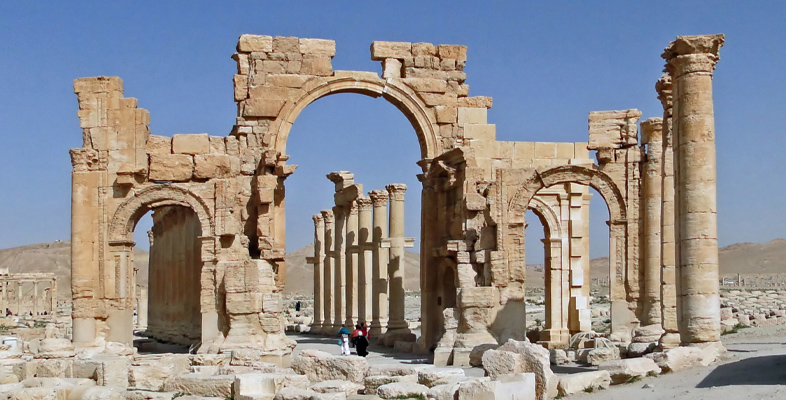2.3 The aggregation problem
As you know from Sections 2.1 and 2.2, comparing the value of heritage and lives is made difficult by their apparent incomparability.
Of course, we might argue that heritage and lives are not always incomparable in every case. For instance, imagine we were weighing up one life against a heritage site beloved by billions of people. Because the heritage is appreciated to such an extent by such a vast number of people, this might indicate to some people that it is more morally significant than a single life.
Yet, this sort of claim is potentially complicated by what we can call the aggregation problem. You can learn more about the basic problem in the next activity by considering the football technician scenario by Tim Scanlon (1998).
Activity 5 Football technician dilemma
Imagine that the final match of the football World Cup is being broadcast on television to billions of fans all over the world (Figure 5). Suddenly and unexpectedly, a piece of equipment falls on one of the television technicians, pinning him to the floor. The technician is not in any danger but if he is not rescued soon he will suffer serious pain and injury. The other workers are faced with a dilemma. The technician can be rescued immediately, but this would require the broadcast to be switched off and the viewers around the world would miss the remainder of the game. Alternatively, the technician could be rescued after the game is over, but he would suffer much more.
Discussion
Here’s one way in which you might have developed your answer: start by adding up or ‘aggregating’ the pleasure which would be felt by the fans if the game continued to be broadcast and see if that outweighs the pain which the technician would feel. If it does, the best option is to leave him trapped. If not, he should be freed immediately.
Yet, other people might feel differently, arguing that the fans’ pleasure is not enough to outweigh the technician’s pain. Indeed, you might feel that this would be true no matter how many people were enjoying the match – even trillions of nice experiences could not justify the technician’s suffering.
There is a general principle which supports the second position: that some pleasures are so insignificant that they can never be ‘aggregated’ in such a way that they become significant. Perhaps a major evil could be justified if it brought about a major benefit, but it could never be justified by minor benefits, no matter how many there were.

